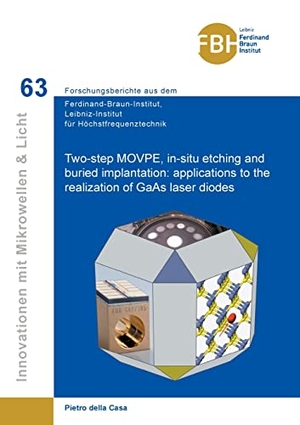Für statistische Zwecke und um bestmögliche Funktionalität zu bieten, speichert diese Website Cookies auf Ihrem Gerät. Das Speichern von Cookies kann in den Browser-Einstellungen deaktiviert werden. Wenn Sie die Website weiter nutzen, stimmen Sie der Verwendung von Cookies zu.
Cookie akzeptieren
Pietro Della Casa
Two-step MOVPE, in-situ etching and buried implantation: applications to the realization of GaAs laser diodes
- Cuvillier
- 2021
- Taschenbuch
- 250 Seiten
- ISBN 9783736973978
This work is about two-step epitaxial growth using metalorganic vapor-phase epitaxy (MOVPE) for the realization of edge-emitting near-infrared laser diodes. The fabricated gallium arsenide-based devices fall into two categories: high-power lasers (watt range, multimodal) and tunable lasers (milliwatt range, monomodal). Common to both cases is that surface contamination ¿ particularly that due to oxygen ¿ needs to be removed before regrowth. Thus, in-situ etching with carbon tetrabromide (CBr4) is first studied. The experimental results include kinetic data, the effects of different etching conditions as well as substrate characteristics, and the effectiveness in reducing surface contamination. These investigations pave the way to devices based on 2-step epitaxy
Mehr
Weniger
zzgl. Versand
in Kürze